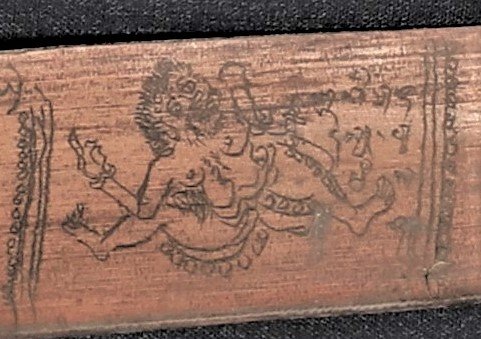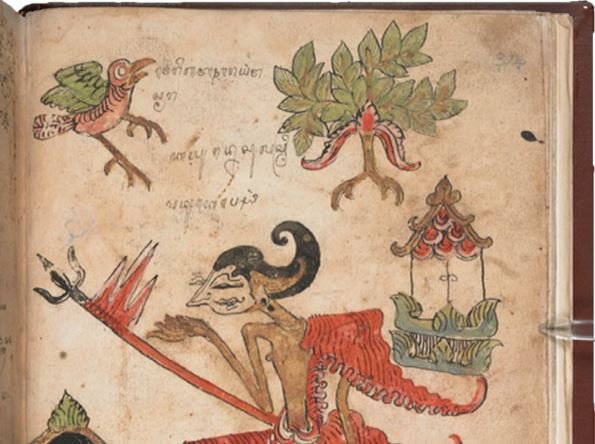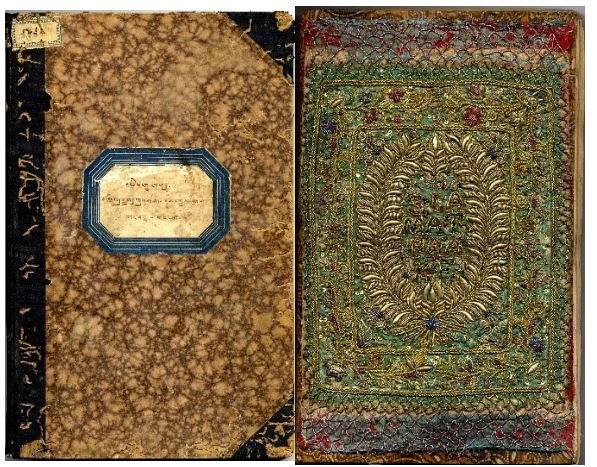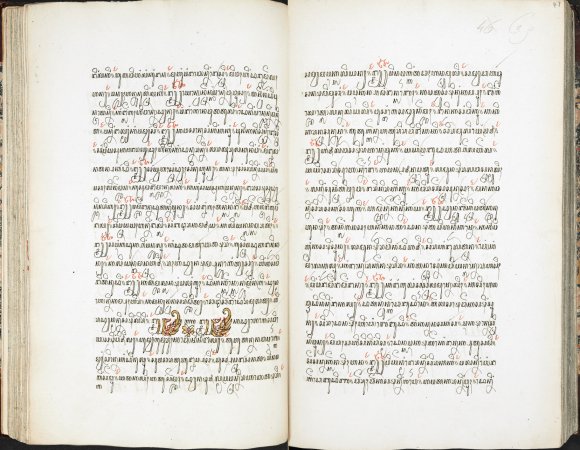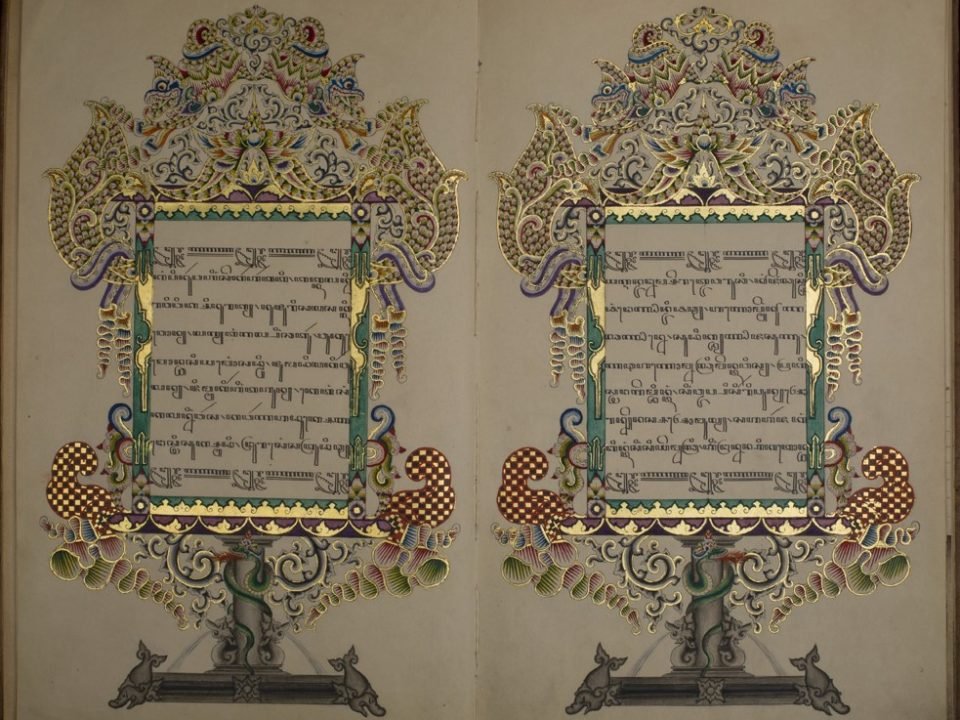May 5, 2021
Published by Dick van Der Meij at May 5, 2021
Categories
One of the crucial problems in philology is deciding whether a manuscript is a new creation or an attempt to create a faithful copy of an already existing text, but it is often hard or even impossible to solve this problem because of a lack of information either in the manuscript itself or from external sources. One of the clues that may help solve this puzzle are the mistakes and corrections the scribe or others have made in the manuscript, either at the time of composing/copying, or at a later stage. Another clue may be the actual number of mistakes: […]
March 22, 2021
Published by Dick van Der Meij at March 22, 2021
Categories
In Bali, many palm leaf manuscripts (called lontar) contain texts on medicine, black and white magic and almanac divination, or combinations of any of the three. In Bali the three different subjects are not clearly demarcated and one simply flows over into the other. It is good to bear in mind that in Bali, the boundaries between philosophy, religion, history, divination and sorcery, and medicine are diffuse and not the same as in other cultures. They are moreover intertwined and for that reason not always understandable to outsiders. Mostly, manuscripts on medicine, magic and divination consist of miscellaneous texts each […]
June 2, 2020
Published by Dick van Der Meij at June 2, 2020
Categories
Book Review: Richard Fox, More than Words. Transforming Script, Agency, and Collective Life in Bali.
Writing and letters in Bali are not just ways to transmit, preserve and disseminate ideas and simple or complex messages and literature. In Bali, writing goes far beyond these more or less ‘universal’ simple reasons why people resort to putting things on paper, or nowadays in the mobile telephone or computer. Letters and writing assume more ‘exoteric’ and ‘esoteric’ roles in Bali which not only linger on but assume new and vibrant new roles on the island. We have little idea when exactly all this started and how or why, and it is refreshing that the author does not seem […]
June 2, 2020
Published by Dick van Der Meij at June 2, 2020
Categories
Dr Dick van der Meij, DREAMSEA’s Academic Advisor and Liaison Officer was invited to deliver a lecture during the International Symposium on Royal Attire and Civilization at the Royal Ambarrukmo Hotel in Yogyakarta from 9-10 March 2020. He delivered his lecture entitled “Illustrated Manuscripts from Yogyakarta and the Attire the Figures on the Illustrations Wear” on 9 March. He presented some of the results and the questions that came up during his philological investigation of the figures and their attire as found in illustrations in a number of manuscripts from Central Java preserved in collections in Berlin and Leiden. At […]
June 2, 2020
Published by Dick van Der Meij at June 2, 2020
Categories
Many libraries in the world preserve Javanese pawukonmanuscripts containing divinatory calendars based on the Javanese 30 seven-day wukucycle. Collections are found in the National Library of Indonesia in Jakarta, the University of Indonesia in Depok, the royal palaces of Yogyakarta and Surakarta in Central Java, the Museum Sonobudoyo in Yogyakarta, Leiden University Library in the Netherlands, the British Library in London and the Staatsbibliothek zu Berlin in Germany, to name some of them. A number of pawukonmanuscripts are illustrated and form the topic of this contribution. Read More Manuscript of the Month 11/2019Text by Dick van der Meij
June 2, 2020
Published by Dick van Der Meij at June 2, 2020
Categories
Manuscripts are not only about content. The leather bindings, the kinds of paper, and the ink used may tell us stories without words – material talks. Dr. Dick van der Meij will introduce us to some Javanese manuscripts In 2015, the Leiden University Libraries received a very special gift from Prof. Merle Ricklefs, who donated seven Javanese manuscripts to the library (Cod.Or. 27.087 – 27.093). Prior to this donation he had already donated the extraordinary Serat Pustakaraja (D Or. 661) to the KITLV library, now part of the UB Leiden. These eight manuscripts form a most magnificent collection on Javanese […]
June 2, 2020
Published by Dick van Der Meij at June 2, 2020
Categories
Today’s guest blog, highlighting one of the most important Javanese manuscripts from Yogyakartawhich has just been digitised, is by Dr Dick van der Meij from Hamburg University’s DREAMSEAproject which digitises endangered manuscripts in Southeast Asia. Javanese texts are generally written in a non-rhyming poetic form called tembang macapat. Within each metre, verses consist of stanzas with a fixed number of lines, a fixed number of syllables per line, and a fixed vowel in the last syllable of each line. There are about 30 different metres, some of which are short and have only four lines per stanza, while others are […]
June 2, 2020
Published by Dick van Der Meij at June 2, 2020
Categories
In 1927, J.C.F. von Mühlen, the private secretary of Prince Hendrik, the husband of Queen Wilhelmina, donated a beautiful manuscript of the Dewa Ruci to their daughter, Princess Juliana of the Netherlands, now preserved in the Royal Collections, The Hague. The manuscript was written in Yogyakarta, one of the four principalities in colonial central Java, in the Javanese year 1834, corresponding to AD 1904. According to the information given at the beginning of the manuscript, it was not made for Princess Juliana but rather for Crown-Prince Kangjeng Gusti Pangeran Adipati Anom Mengkunegara Sudibya (1879-1913), son of Hamengkubuwana VII, the Sultan […]


